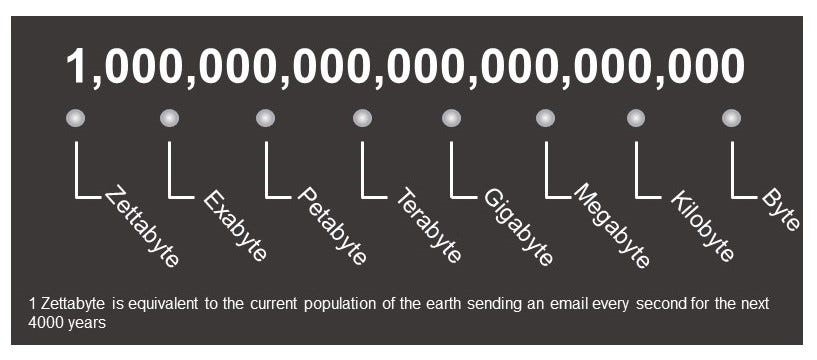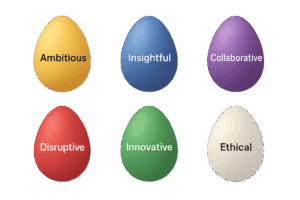‘Big Data’, ‘Data is King’, ‘In Data we Trust’, ……. the power of data has been acknowledged and accepted for decades now. We live in a World where the volume of data being created has been growing exponentially every year from 2 zettabytes in 2010 to an expected 181 zettabytes in 2025 (1 Zettabyte is equal to 1,000,000,000,000,000,000,000 bytes). It is estimated that 90% of the world’s data was created in the last two years alone.

Whilst having data clearly presents opportunities to businesses and society as a whole, knowing what to do with the data appears to be the challenge. This is where storytelling comes in.
According to Microsoft, data storytelling is the concept of building a compelling narrative based on complex data and analytics that help tell your story and influence and inform a particular audience.
Whilst the concept of data storytelling has been around for decades, it is never more important now to help us interpret and simplify the data available to us in a compelling way. After all, the power lies not in the raw data itself but the ability to analyse the data and effectively build narratives and conclusions, enabling people to make business and societal decisions.
The human brain is expected to take in so much information every day that it needs help to determine what is important and not. We are naturally wired to engage and respond to communications when it is structured as a story. So naturally, combining data with storytelling has the potential to turn uninspiring and daunting data sets into engaging and meaningful communication that brings real credibility to your data and enable your audience to make decisions emotionally, whilst backed up with logic.
As consumers we may not even realise when companies we interact with are using data storytelling. Companies such as Spotify, Airbnb and BBC all regularly use data storytelling. Google’s Year in Search is a data-driven story that enables consumers to “see the questions we shared, the people who inspired us and the moments that captured the world’s attention each year”. Google compiles the most searched words and phrases from the past year and presents the resulting story in the form of a thought-provoking video. For 2022, Google’s aim was to inspire with a brand narrative focusing on the themes of healing and moving forward:
During the inception of Agena we decided to be a data-led organisation using insights to drive business decisions and create client value. We invested heavily in talent such as Data Scientists and Analysts and use PowerBI as our data visualisation tool. Through our various operator businesses (Premier Park, UK CPM, Park Watch) data storytelling has been used to not only underpin the performance of our own business but also help us bring unique insight to our clients in a compelling way.
For example, we collate the number of ‘vehicle events’ (all vehicles entering the car park over a given period of time) at our clients’ car parks using ANPR cameras. Whilst this information provides insight into the use of a car park and potential parking revenue, our aim has been to build a compelling narrative using this data. We spent time understanding the client objectives we could support with the data, in this case improving motorist experience and maximising income. We then invested significant time and resources collating and analysing additional data points to help build a compelling narrative. Our resulting occupancy data storytelling and recommendations have helped clients improve motorist experience during periods of high occupancy through initiatives such as additional onsite presence to help motorists, changing shift patterns and training schedules for staffing parking and incentivising parking during low occupancy periods. We have also created alternative revenue streams during periods of low occupancy, using car parks as an overflow facility for local businesses, introducing pre-booking capabilities or identifying alternative uses for parking bays.
Similarly, we also collate emissions data for all vehicles visiting our clients’ car parks. In itself this information is interesting and holds some value. However the true value of this data is to help clients meet their sustainability objectives. Through effective story telling we have been able to analyse this data, create a narrative and identify actions which have helped clients reduce the carbon footprint of their car parks and drive their EV charging strategy. Data storytelling has created context for our data and in turn dramatically increased the impact of our emissions and sustainability communications compared with a purely factual presentation of the facts.
The importance of data storytelling will continue to grow as the volume of data continues to increase. Below are some tips from Agena’s experience of using storytelling to harness the power of data:
- Understand the problem you are trying to address and collate the right data set to support the hypothesis. This ensures data storytelling is relevant to your target audience, whether they are clients, employees or other stakeholders
- Keep it simple – remember the purpose of storytelling is to create an engaging and meaningful communication about the data that will differentiate it from the high volume of data people are ingesting on a daily basis
- Visualise the data effectively but understand this forms only a part of storytelling which relies on wider expertise on specific sectors and topics. Communication skills to help craft the data analysis and visualisations into something that can explain the who, what, why, and how of a broader story is important. Consider what your audience wants to see and enable them to engage with the data
- Ingrain data storytelling into the culture of your organisation. First and foremost it is important employees understand the problem they are trying to fix or objective they are trying to achieve. Train your teams to use data to have client conversations or make decisions.
The ability to analyse, interpret and build a narrative around data has gone beyond the data team to maximise business performance. Data storytelling is a core competency amongst high performing businesses and enables us to harness the true power of data.
There are numerous examples of creating strong narratives using raw data and effective storytelling, that we could all learn from. Please do join me on LinkedIn to share your own thoughts on this topic and the best examples you have come across. If you would like to understand more about how we use data storytelling at Agena or would like to discuss how you could implement data storytelling in your organisation, drop me a message.

Deep Sen
Deep Sen, Agena Group’s Chief Sales Officer, leads sales activities to boost revenue. He’s known for consultative client engagement and developing high-performing teams through coaching and mentoring. With prior experience as a Managing Director overseeing diverse services in Europe, Deep is skilled in driving growth and transforming businesses. Beyond work, he resides in Hertfordshire with his family and has a passion for international travel.

